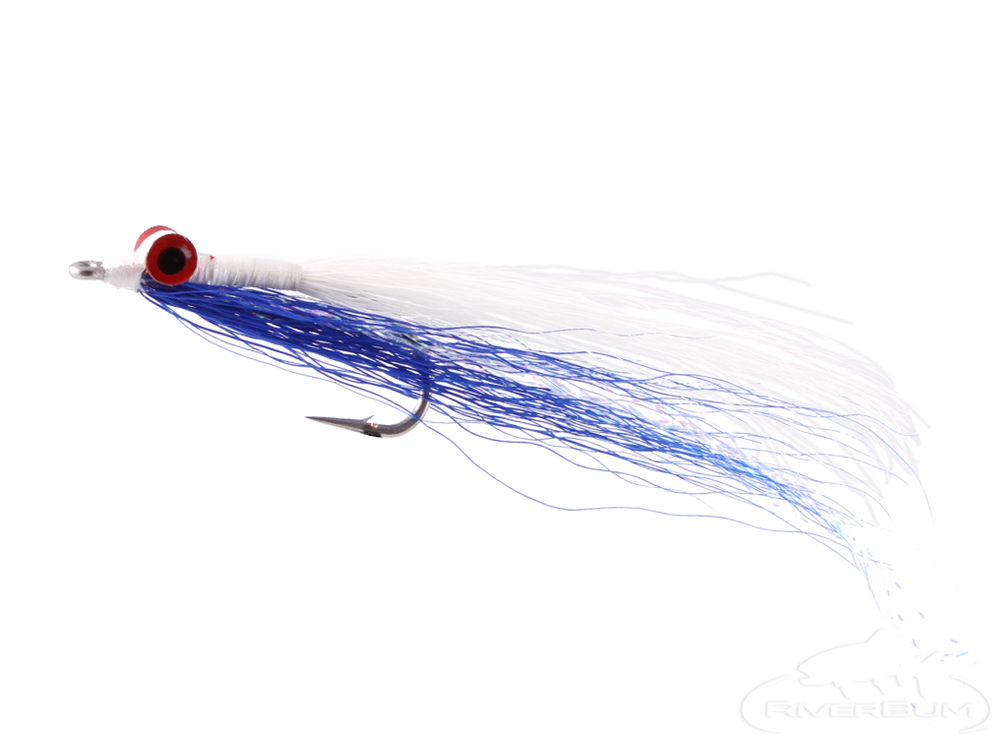Bass Fly Fishing for the Beginner
Most of us that have bass fished started off using conventional gear.....as in spinning rods and bait casters. However, fly fishing for bass has some key advantages over conventional gear.
Advantages to Fly Fishing for Bass
The biggest advantage is that you are in constant contact with the line. Any subtle take, you're going to feel.
Second, you can cast a weightless fly. Think of a stealthy presentation on top of the lily pads and then a couple of quick tugs!
Last bug not least, you can fish the entire water column.
Flies for Bass Fishing
Bass are opportunistic feeders. Therefore, there's a lot of bugs that work well. We know that they eat smaller fish, worms, bugs, crayfish, dragonflies, lizards, mice, and even ducklings. I find it amazing how bass will eat huge flies, but just as readily, they will take a tiny hopper.
Surface Bass Flies
The large surface flies are the most fun to fish. The action is unreal. The vicious surface strikes are one of the greatest thrills of fishing.
I like to fish them when the sun is high so they cast a shadow on/between the lilies where ole’ bucketmouth is casually looking up. I will intentionally smack cast the top of the lilies to get the fish’s attention, and then move slowly from lily pad to lily pad, in slurping quick strips, with an agonizingly long wait in between.
With this type of fishing, weedless is essential. However, so aren’t still leaders. We are talking 0X to 2X here. You want a leader stiff enough to turn over a large fly. It also needs to be stout enough if you hook a big bass.
Hair bugs in bright or drab colors with rubber legs work well. Frog patterns with a light belly seem to be preferred, although the bass is only seeing a shadow from underneath.
Subsurface Bass Flies
We know that more fish are caught below the surface, and sub surface flies catch more fish, period. There are a couple of good options to ‘Texas rig’ the fly and leader. Very small split-shot can be attached to the leader, and we also use a Carolina rigged brass bead head. Small baitfish patterns are particularly effective.
Bass Fishing with a Clouser Minnow
The Clouser minnow is a stunningly simple and effective fly. First tied by Bob Clouser, with extensive endorsement by friend, Lefty Kreh (and the rest of us!) It is a fly fisherman’s jig. The Clouser “swims” hook point up which makes it fairly weedless to structure on the bottom.
I like to let the fly sink to the bottom, then with quick strips, and pauses, the fly hops across the bottom. Alternatively, fish with a slow strip, which drags the nose across the bottom, kicking up mud and sand. To fish high in the water column, immediately strip the fly when it hits the water. Keep it moving with quick strips. As the fly jigs up and down, you can cover a lot of water in this manner.
Using Sink Tips
A deep sinking line, fished with a short leader can be very effective. Most anglers are tempted to use a Sink Tip, but I much prefer the full sinking line. This line does not cause a tailing loop when casting and does not ‘hinge’ on the retrieve so that there is no slack, and bites can easily be felt.
Always use a 2 foot to 4 foot leader. Sometimes, I just use tippet. A fun method is to fish a sinking line is over submerged hydrilla. Allow the line to sink to the top of the hydrilla (ten seconds or more.) The fly will be suspended above the weeds. Use a short quick retrieve and the fly dives into the top of the hydrilla! Some of my best fish have been caught using this technique. A suspending fly like a Deceiver on a three foot piece of tippet works well in deep water, also.
Windy days are perfect for a sinking line.
While it can be difficult to cast a floating line in the wind, the dense sinking line is fishable. And the fly turns over much easier because of the short leader/tippet. If the water is choppy, there is very little surface feeding. As you wait for the line to sink, it is straitening the leader.
Retrieve a sinking line further than you would retrieve a floating line, and use a roll cast or two to get the fly to the surface, then begin you normal back cast. A sinking line expands fishing techniques, and may just save the day too!
Tight Lines and Screaming Drags.
















